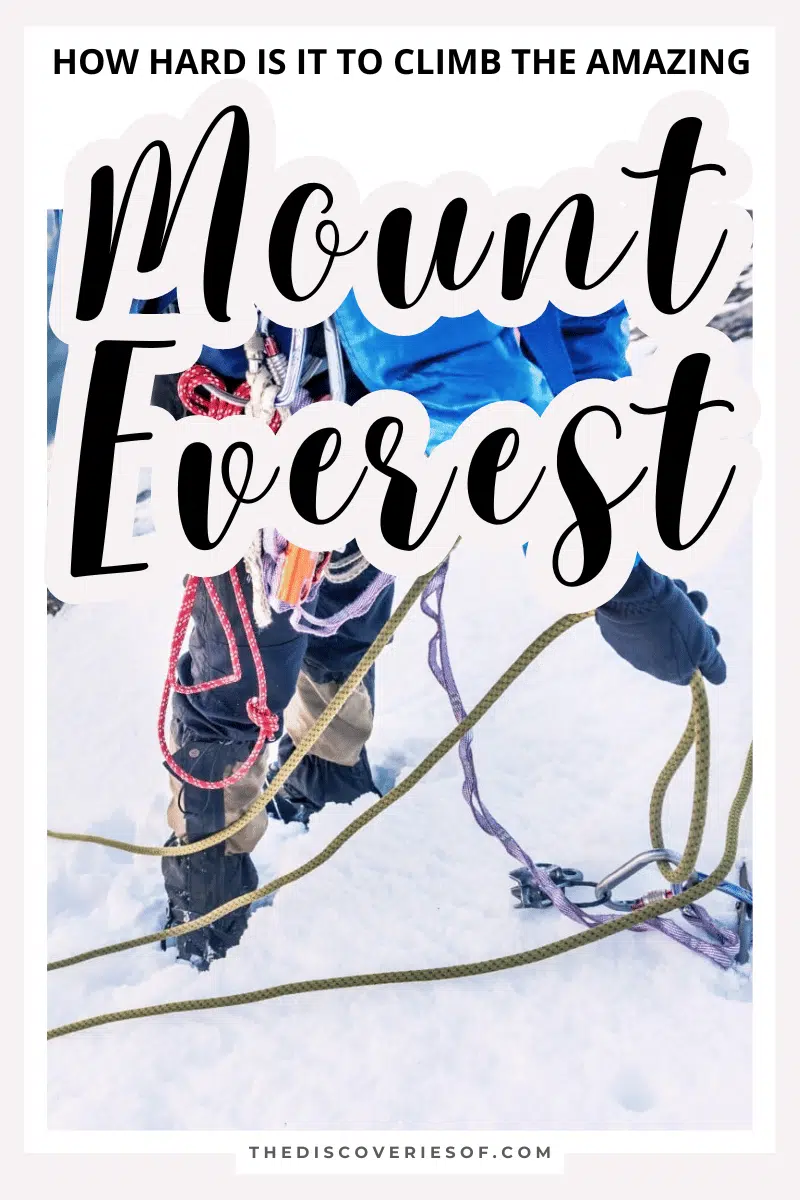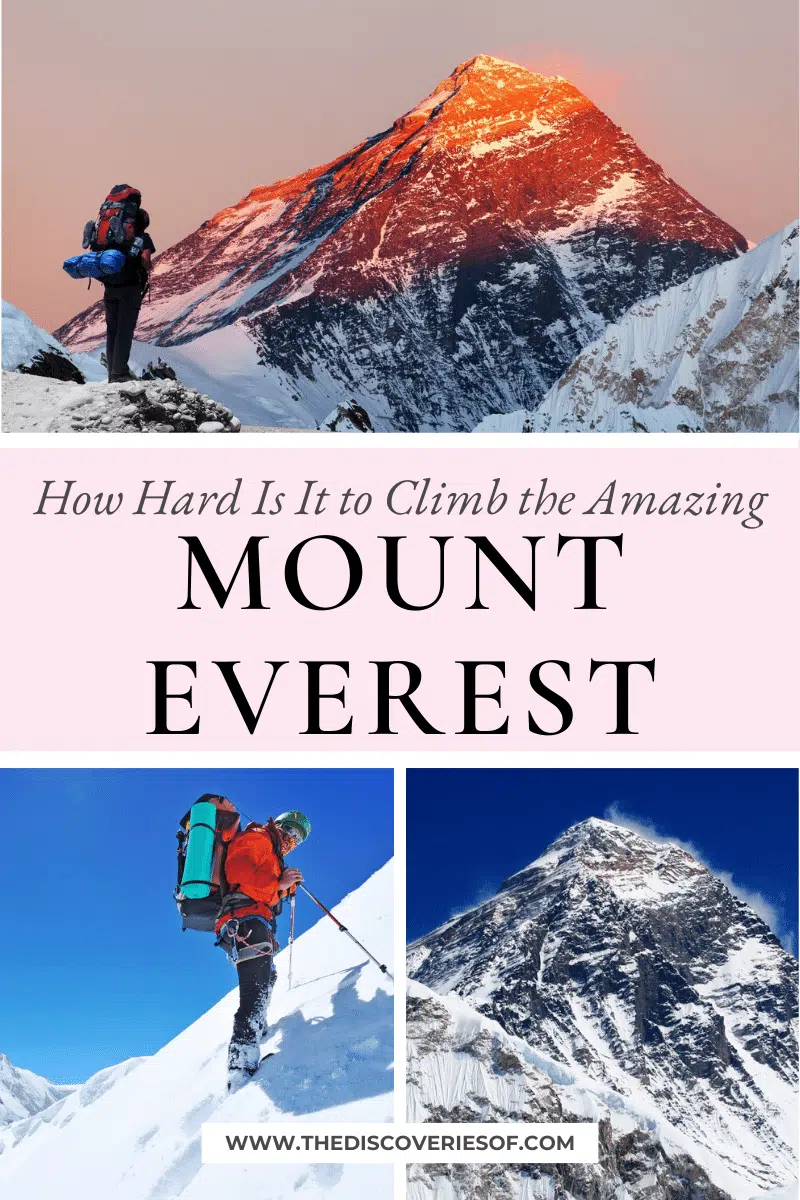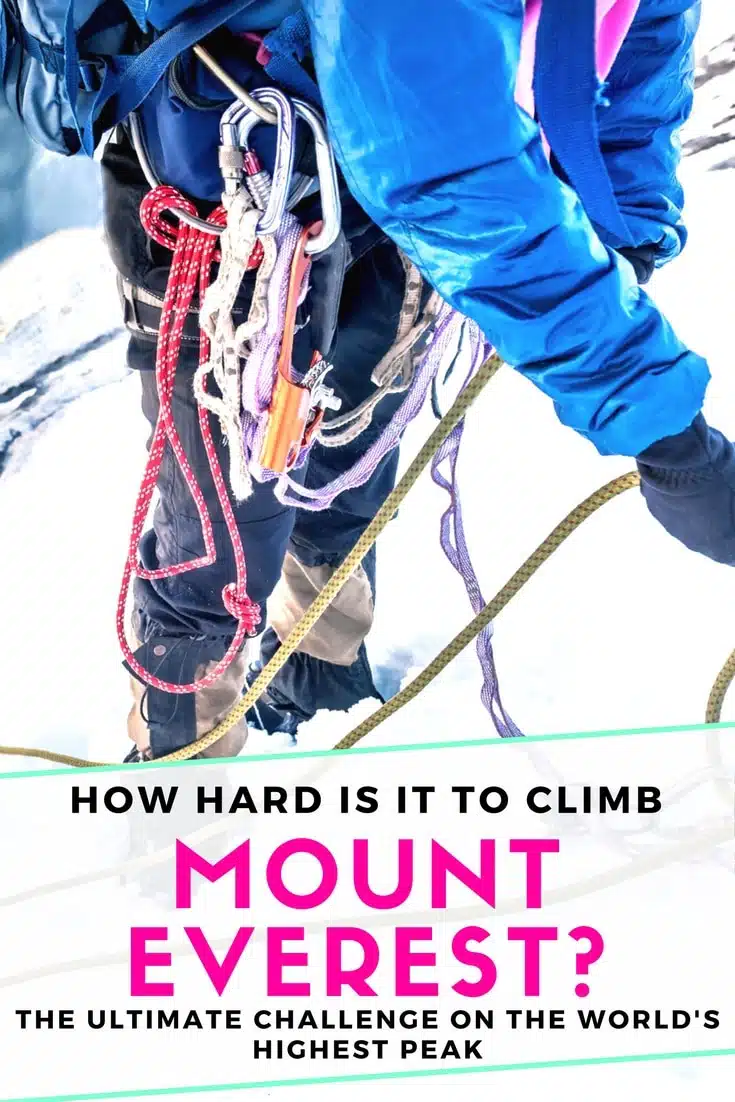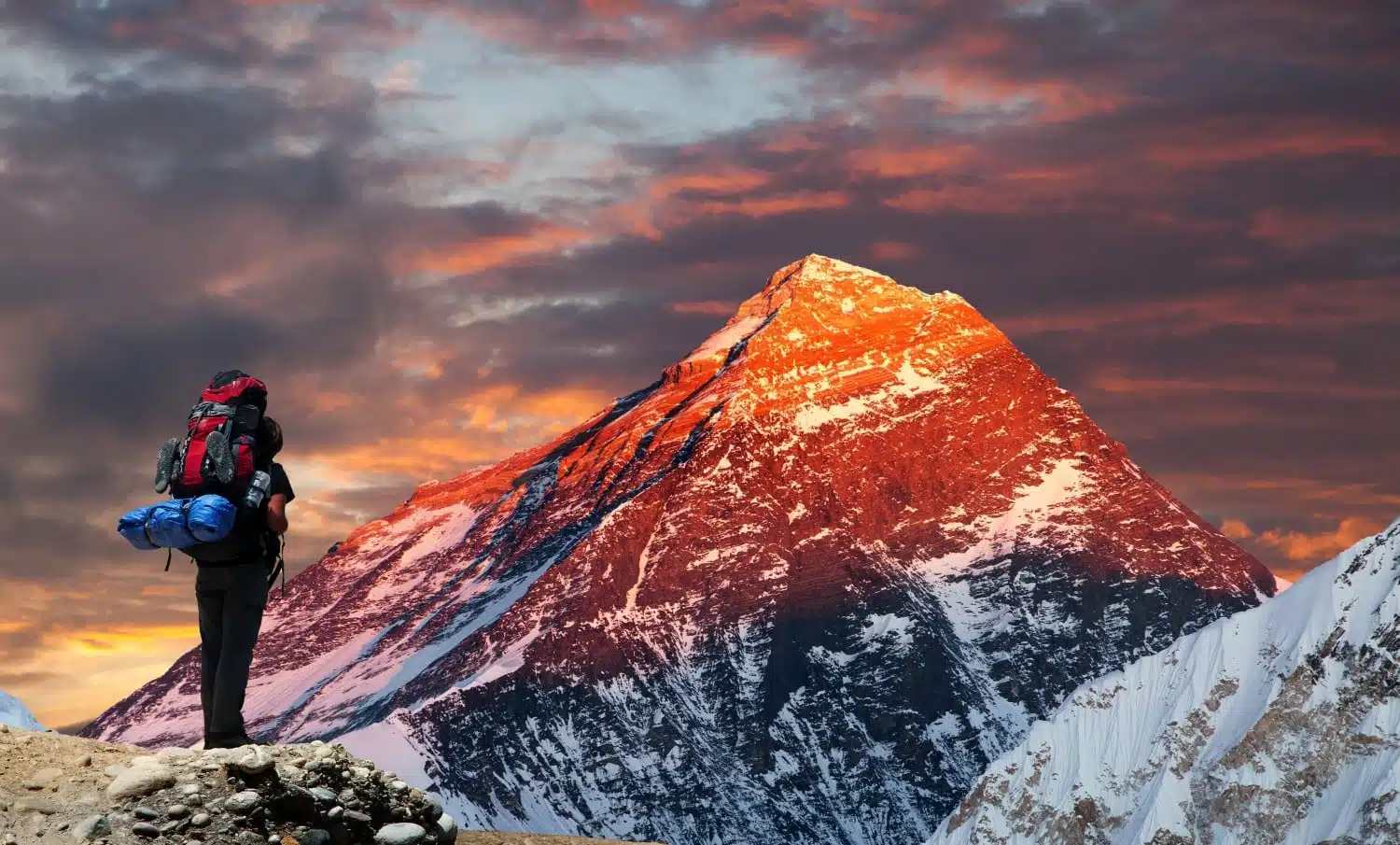Mount Everest has long held a fascination for climbers – the status quo of climbing the world’s tallest mountain is something special. But, in an age of growing accessibility, has the mountain become commercialised, asks Julianna Barnaby?
Everest, Sagarmatha, Chomolungma, Qomolangma, Zhumulangma. These are just some of the names for the highest mountain in the world. But to the potential summiteer, it means one thing. The once in a lifetime chance to get to grips with nature and push yourself to the limit.
8,840 metres high, Mount Everest has fascinated climbers ever since Clinton Thomas Dent first suggested that it would be possible to climb the mountain in 1874. It wasn’t until almost a century later that the dream became a reality when Edmund Hillary and Tenzing Norgay made the first successful summit in 1953.
Now, over sixty years later more than 4,000 people have successfully reached the peak of Everest, most from Nepal, some from Tibet. Countless more have tried and failed. Developments in equipment, clothing, knowledge and guidance have made it possible for more people to achieve their goal of standing on the top of the world.
An Increasingly Easy Challenge?
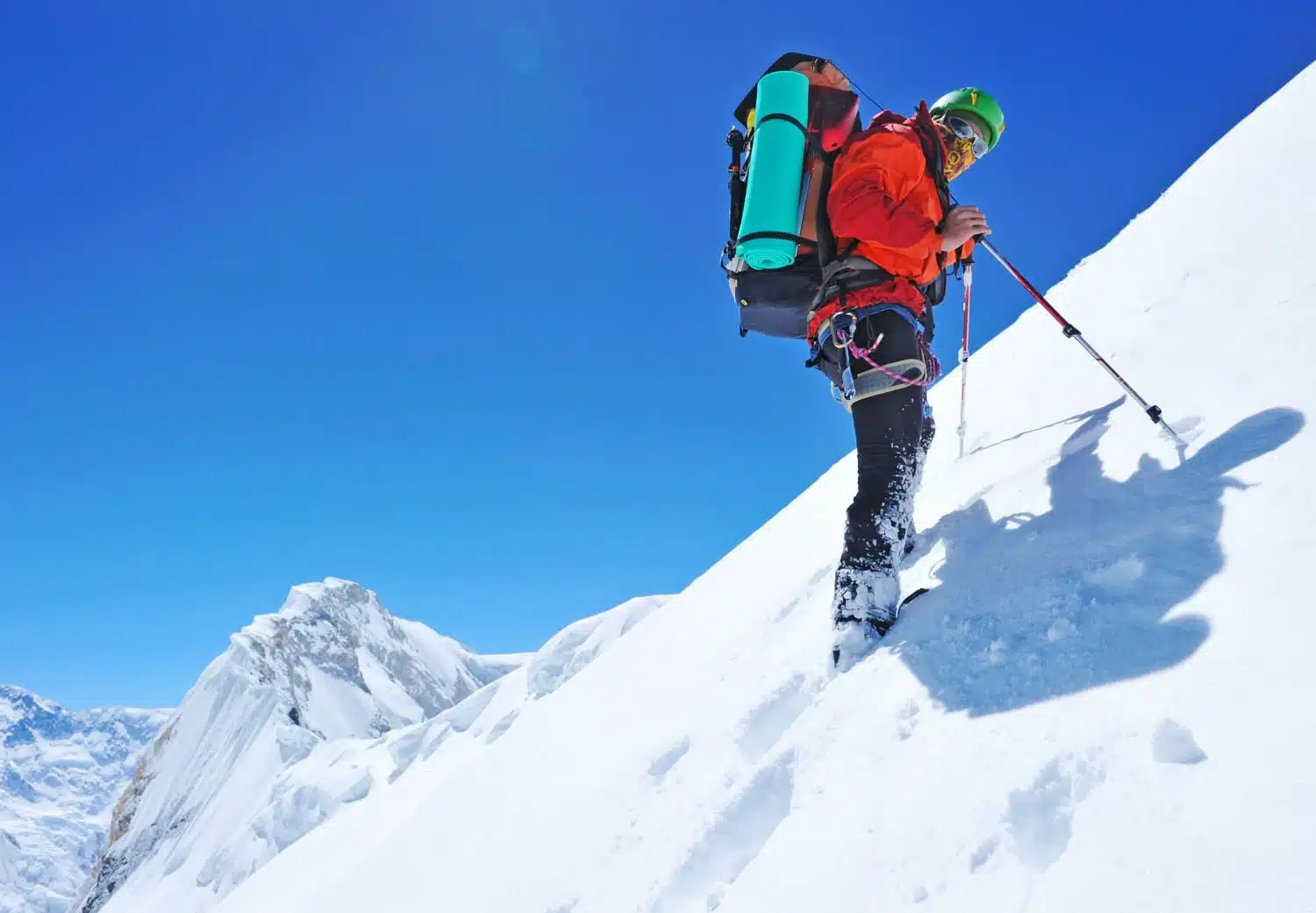
But how hard is it to climb Mount Everest? Has the mountain lost its position as the ultimate status of physical and mental strength?
Different people view Mount Everest in different ways. For some, it remains an impossible goal – they might be willing to trek to base camp but taking on a summit is a step too far. For others, it’s more accessible than it would have been in previous years,
One of the results of this growing accessibility to the mountain is the number of corporate-sponsored or corporate-organised summit attempts. These expeditions use guides and organisations to help people overcome the obstacles Everest puts in their way.
Some have suggested that this an example of companies paying their way to success. After all, when you have phrases such as ‘guaranteed summit’ treks being used, it’s no wonder that people are starting to ask the question how hard is it to climb Mount Everest.
Eric Simonson of Mountain Guides, one of the largest guide services in the US is quick to disagree. “There is no such thing as a guaranteed summit and I am unaware of any legitimate guide service making this claim. There are only two ways that you can pay to attempt to climb Everest. Either you look for sponsors to help you pay, or you write a cheque yourself,” he argues.
There is no such thing as a guaranteed summit and I am unaware of any legitimate guide service making this claim.
Eric Simonson of Mountain Guides
Cost vs Safety
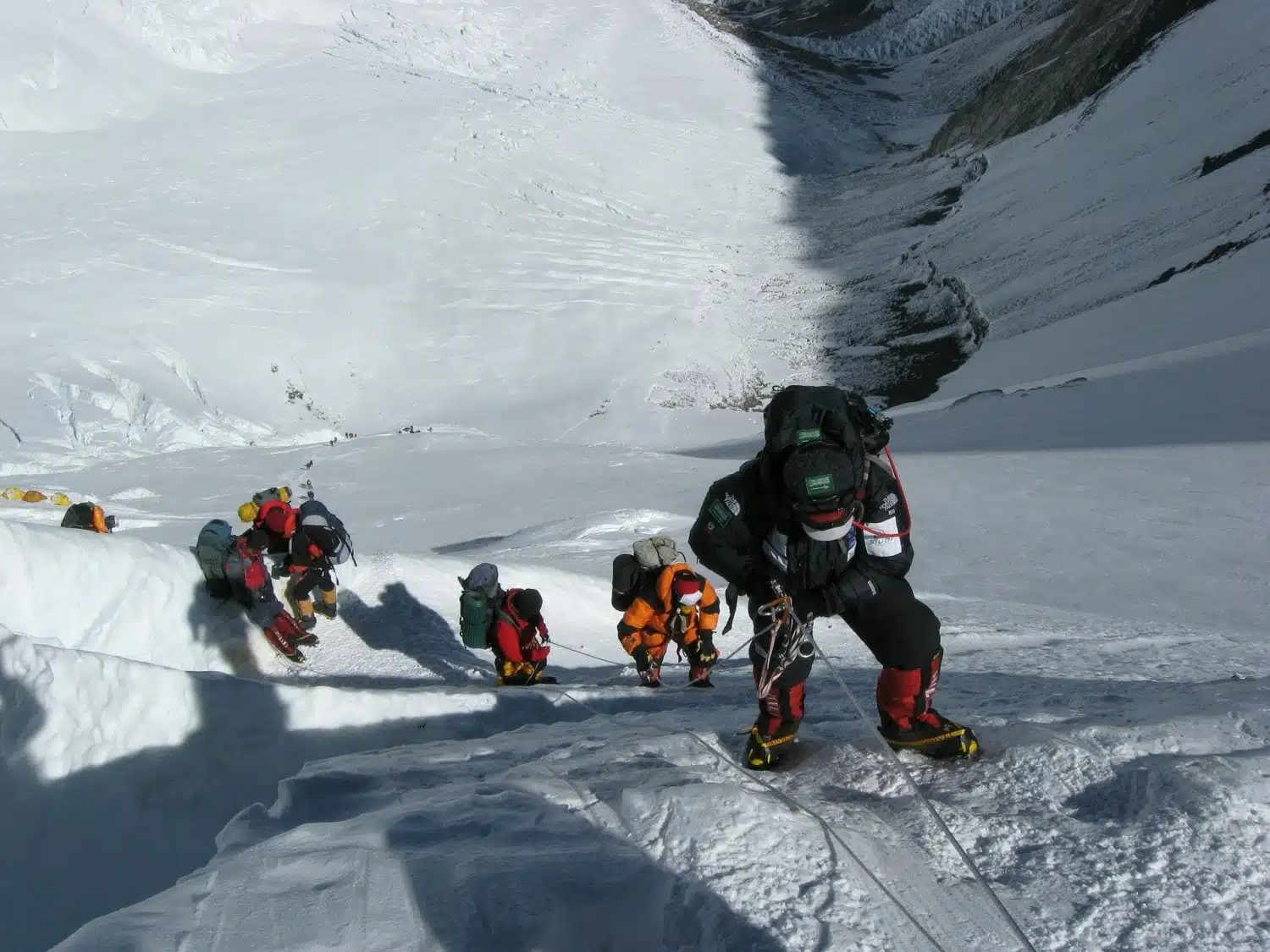
The figures involved in a summit bid are high, ranging from £6,500 upwards. But this is significantly less than the cost in the past.
“If you look at expeditions from 50 years ago, they did tend to be very white, male and from a certain social class. Climbing has become a much more democratic activity since then,” says Cathy O’Dowd the first woman to reach the top of Everest from both the south and north climbing routes.
If you look at expeditions from 50 years ago, they did tend to be very white, male and from a certain social class. Climbing has become a much more democratic activity since then
Cathy O’Dowd: the first woman to reach the top of Everest from both the south and north climbing routes
“Guides maximise safety by making sure that climbers are aware of the risks involved and have the skills needed to try and survive those risks. Operators always have to be very selective about which clients they take with them and the clients need to take heavy responsibility for their own safety,” she continues.
Unless you socialise in circles of avid mountaineers, it’s often impossible to get enough people you know to make your own team. Going with an established operator is often the only chance people have of ever attempting the feat.
The threat of commercialisation comes in another form too. China recently announced plans to build a luxury resort and helipad on Mount Everest, meaning access to the Tibetan Base Camp would be easier than ever before.
Democracy on the Mountain
Commercialisation should not be taken as a byword for easier either. Simonson counters that the increasing numbers of successful summits are a result of the ‘democratisation of the mountain’. It’s something normal individuals can aspire to. Not just the well-connected individuals who knew the right people or were able to join a national expedition as was the case in the past.
“These days, if people are healthy and strong, take the time to prepare, have the money and a strong sense of adventure, they can do it, that doesn’t make it easier,” he continues.
These days, if people are healthy and strong, take the time to prepare, have the money and a strong sense of adventure, they can do it, that doesn’t make it easier.
Eric Simonson, Mountain Guides
In the way that many people couldn’t previously aspire to holidays in exotic locations abroad fifty years ago, many see the changes in the mountain as part of global progress. People have more disposable time and cash.
“The global media means that we know much more about far off places and challenges than we once did. And adventurous sport is certainly more fashionable than it used to be,” explains O‘Dowd.
What’s Changed For Everest Climbers?
Much as that may be the case, the task of climbing Everest is certainly not quite the same in modern times. “Today’s modern climbers don’t do any of the heavy work on the mountain,” says Becky, co-founder of Peak Freaks. “They don’t haul loads, tents, stoves, food, oxygen, rope or fix the routes with rope as they had to do in the past. That’s where the mountain guides step into the equation”
O’Dowd agrees. “Reaching the top has become somewhat easier. Knowledge helps enormously. We now know much more about where and what the dangers are. Where the safest routes go, where to camp, how to deal with altitude sickness, etc, etc. And equipment has become much lighter and more efficient,” she explains.
What Do Guide Companies Do?
Commercial guide companies make sure that mountaineers have all the knowledge and guidance they need for a successful summit. They employ sherpas along with the Western guides to help to carry the loads and make crucial decisions on behalf of the team. Their knowledge increases the chances of a successful summit but doesn’t guarantee it. “It’s almost impossible to do it without support,” Becky continues.
Essentially, commercial guide companies make sure that mountaineers have all the knowledge and guidance they need for a successful summit.
“A team that goes without Sherpa support is rare. Someone needs to help carry essentials to sustain life at those altitudes. Carrying everything yourself is very taxing on the body at such high altitudes. By hiring knowledgeable and skilled Sherpa staff, supplying oxygen, understanding the variable weather patterns of the Himalayas, knowing when to go and equipping summiteers with all the knowledge they need, we can help with their chances.”
Even on the notoriously dangerous ice-fall on the south side, a team of Sherpa crew called the ice-doctors are now on hand. They maintain and fix the ladders disturbed by ice falls making the area much safer.
Still Challenging, Still Difficult
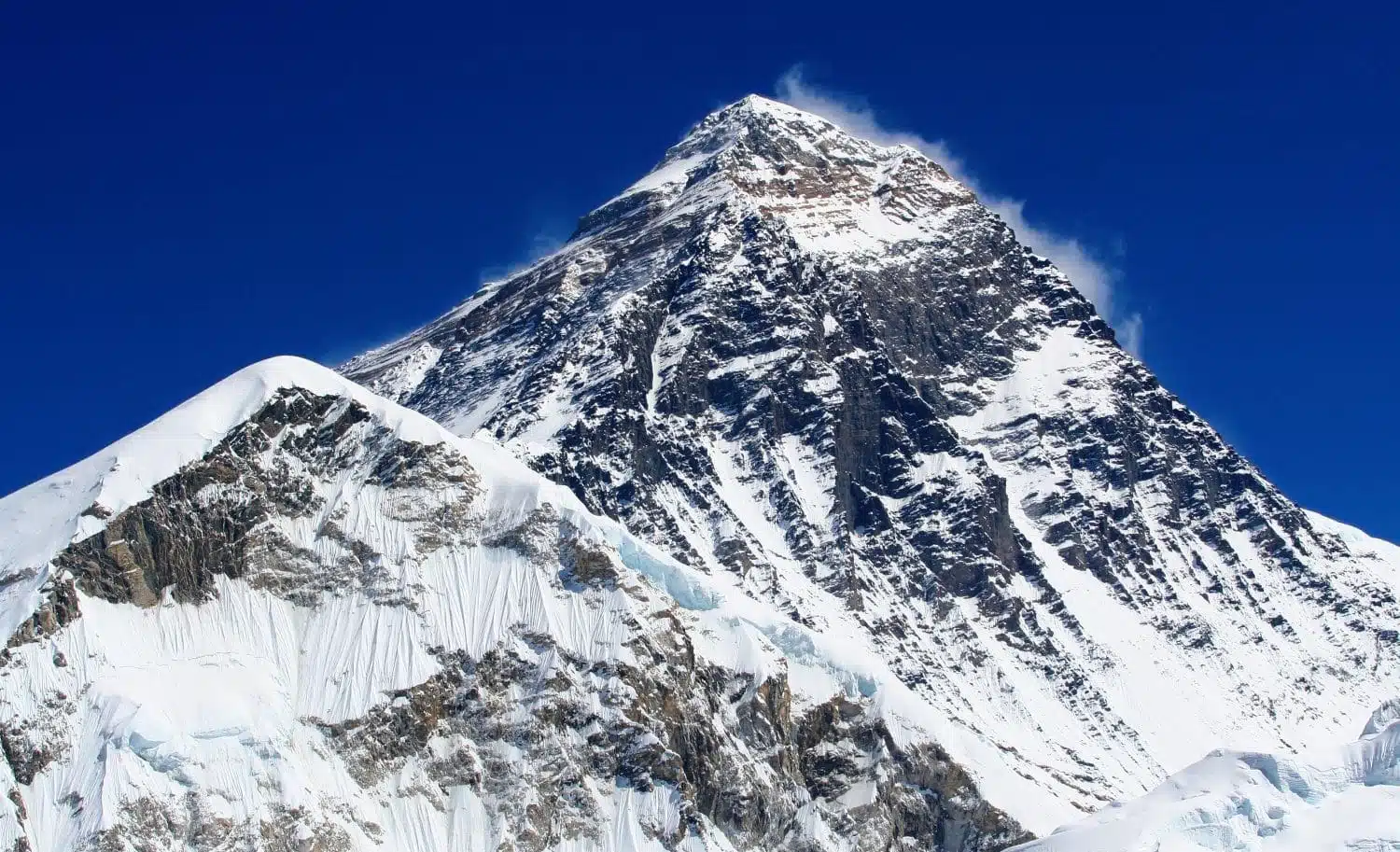
Climbing the mountain is still a significant challenge. “No one is ever guaranteed a summit – ever. Summiting Everest is to do with skill, but it’s also about luck with the weather and your health.”
“Expeditions can go and spend two months working on the mountain hauling loads and acclimatising and still not get the window of opportunity and have to go home defeated. Possible illness is a threat too. You can get a cold or other illness and not be able to recover because of the high altitude.”
With both weather and health on your side, fit summiteers can be taken to the top by a guide without having to make a decision for themselves. But that’s a huge gamble as weather and health can rarely be depended on. It’s not only dangerous for the individuals, it’s dangerous for guides and the rest of the team.
Mountains might seem picturesque and easy on a sunny calm day. You shouldn’t forget that they can quickly turn into death traps with very little warning. Thus people who are attempting to climb Everest must be able to assess risks and judge situations for themselves.
Mountains might seem picturesque and easy on a sunny calm day. You shouldn’t forget that they can quickly turn into death traps with very little warning.
“The mountain is still the same height as if was fifty years ago and climbing it should still retain the same status. It’s an amazing and potentially life-changing accomplishment that should not be diminished by the fact that more people have done it,” Simonson elaborates. “It is as close as a normal person can get to space without leaving the earth.”
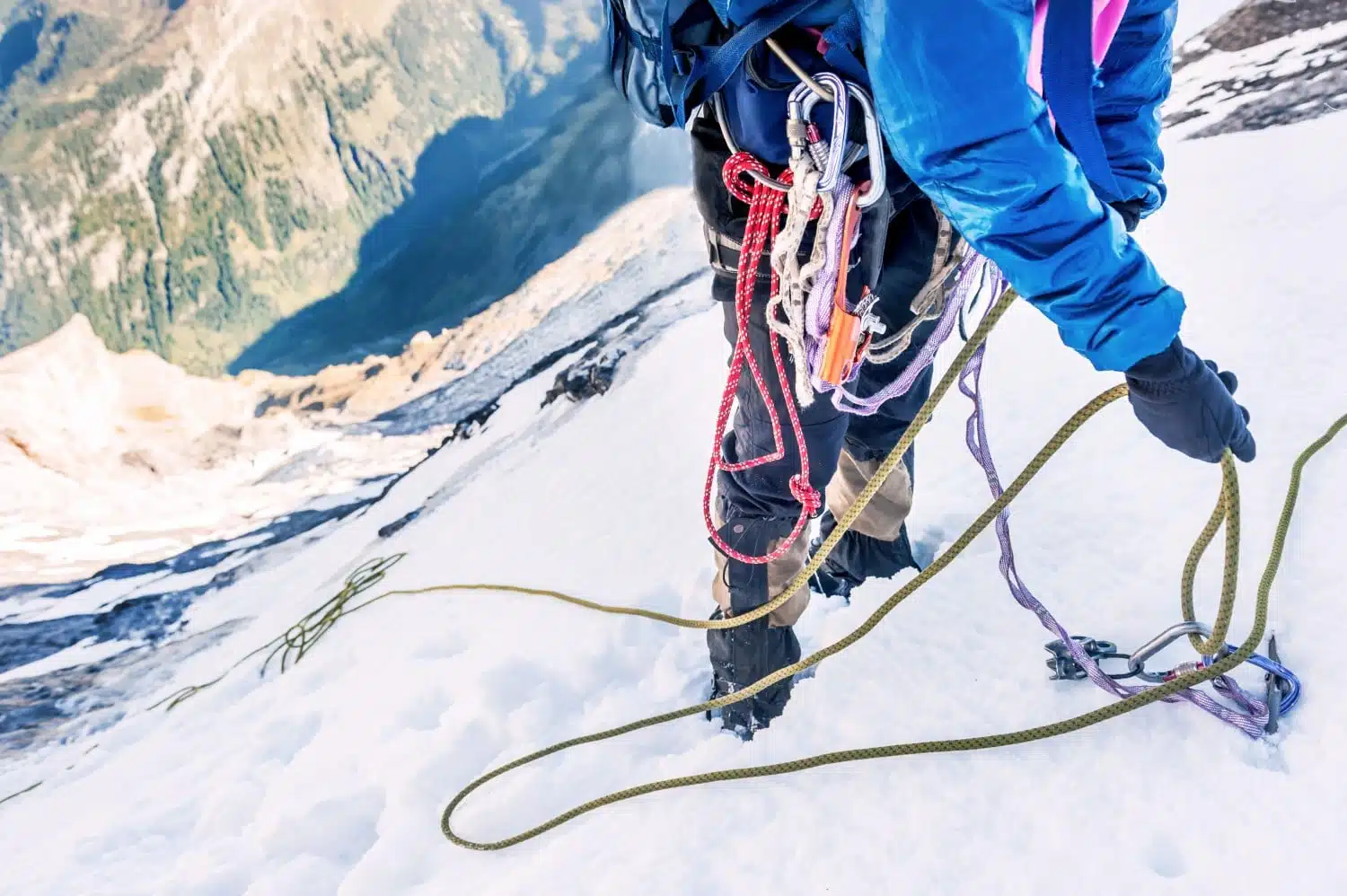
So How Do You Conquer Mount Everest?
Conquering Everest is a test of skill, strength and resolve. The slopes are the same as they were fifty years ago, people have just learnt to approach it better. That is the general consensus between the mountaineers and guides.
It’s simply not a matter of throwing money at a solution and hoping for the best. Conditions are gruelling. Possible hazards include hypothermia, alpine trench foot, hacking coughs, cuts that don’t heal, altitude sickness, loss of appetite, acute mountain sickness and frostbite. Not to mention sudden hazards such as avalanches.
How Fit Do You Need To Be?
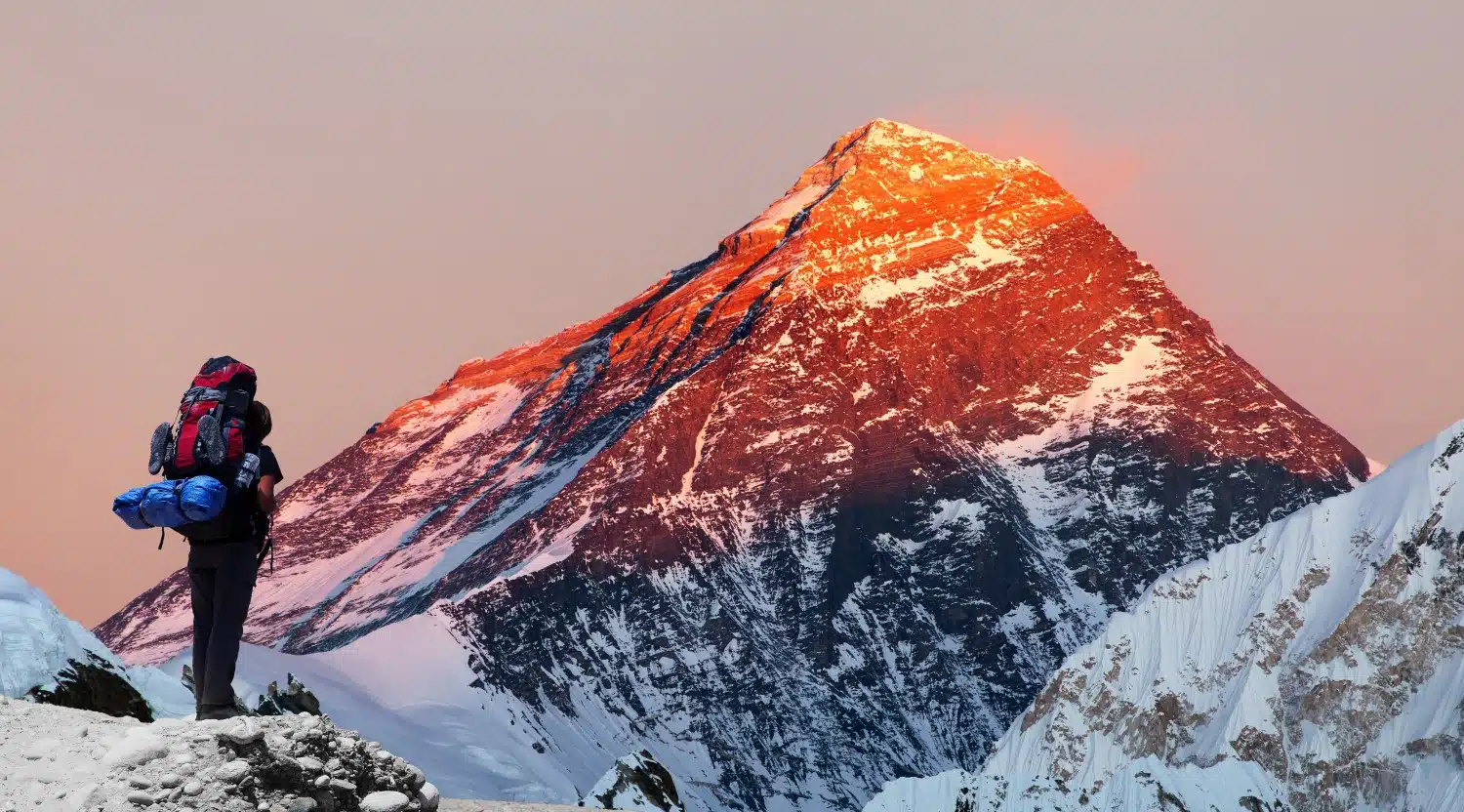
In addition to this, the physical demands placed on the body require that all participants have a high level of physical fitness and climbing experience. Mountain Guides stipulates that climbers must have successfully been to 7,000 metres. Even so, they prefer 8,000 metre bids such as Cho Oyu. One thing they are all very clear about is that it is not possible for an absolute novice to make an attempt.
Summiteers have to be prepared for the eventuality that just because they’re fit enough, they still might not be able to make it – a concept that takes a significant amount of mental strength. Mount Everest is as much a mental game as it is a physical gruel.
“It’s hard living in a tent for 60 days in the cold before the climb to the summit even begins. Many people lose their resolve at this stage of the game even though they are fit and skilled. A positive attitude is just as important as fitness levels,” Becky adds.
Climbers must learn to be self-reliant and know how to use all the equipment. This is especially true if for some reason they get separated from their guide.
Can A Novice Climb Mount Everest?
The demands of the task are put into perspective by the amount of time spent preparing from absolute beginner level. “If someone started out as a complete novice, I think three years of preparation is a reasonable timeline if they are willing to devote the time and money to training climbs,” Simonson explains.
If someone started out as a complete novice, I think three years of preparation is a reasonable timeline.
Eric Simonson, Mountain Guides
It’s not in any of the guide companies interests’ to take people that are unprepared up the mountain. There’s no shortage of climbers that are well trained. Why would they take the risk of bringing people that will only potentially hamper the rest of the team? Not to mention the negative publicity it attracts.
Looking to the Future
Everest is still somewhat of a mystery, even to the climbers. There is no way to make it safe. Even the two routes generally used by the more commercial climbs each pose their own challenges. The north side’s challenge is the long traverse at extreme altitudes after the summit bid before getting to a lower and safer altitude, which can be dangerous for tired climbers. On the south side, the ice-fall can crush climbers without notice.
Everest is still somewhat of a mystery, even to the climbers. There is no way to make it safe.
Catherine O Dowd
These two aren’t the only routes that can be taken however. “There are some 12 other routes up Everest, many much, much harder. And there is still potential for new routes on Everest, especially on the east (Kangshung) face. In other words there are still ways up Everest that are so hard that no one has yet been able to climb them,” O’Dowd concludes.
Essentially, any attempt of getting to the top of Everest is going to be dangerous. Individuals pit themselves against one of the harshest and least hospitable terrains on earth, facing sub-zero temperatures, trails fraught with danger and hazards aplenty. Climbing is an inherently dangerous activity, but the management of risk is part of the interest of the challenge for many climbers. Money or no money, corporate sponsorship, the only way to stay safe is to stay at home.
Love This? Share and Save on Pinterest
